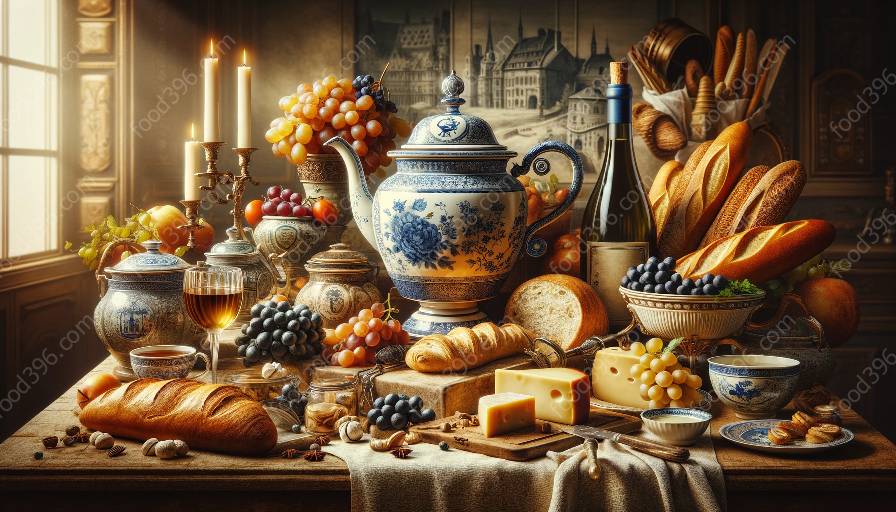The Renaissance period and French cuisine are two captivating subjects that intertwine to create a rich tapestry of history, flavors, and cultural significance. In this exploration, we'll delve into the influences of the Renaissance on French culinary traditions, uncovering the evolution of tastes, ingredients, and dining customs. Join us as we journey through the art, flavors, and innovations that define the exquisite fusion of the Renaissance period and French cuisine.
The Renaissance: A Cultural Rebirth
The Renaissance, which spanned from the 14th to the 17th century, marked a period of profound cultural, artistic, and intellectual transformation across Europe. It began in Italy and later spread to other parts of the continent, including France. The Renaissance was characterized by a revival of classical learning, exploration, and a newfound appreciation for the arts and sciences.
Art and Cuisine: A Nexus of Creativity
One of the defining features of the Renaissance was the flourishing of art in various forms, from painting and sculpture to literature and culinary arts. The Renaissance artists and thinkers celebrated the inherent beauty of nature and sought to capture it in their creations. This artistic renaissance profoundly influenced the culinary landscape, paving the way for a greater focus on aesthetics, innovation, and gastronomic experimentation.
The Evolution of French Cuisine
French cuisine has long been regarded as a pinnacle of culinary excellence, and its rich history is intertwined with the societal, cultural, and artistic movements of the Renaissance. During the Renaissance, France experienced a culinary revolution, as the nobility and the emerging middle class embraced new culinary practices, refined dining etiquette, and a heightened appreciation for the pleasures of the table.
Influences of the Renaissance on French Cuisine
The Renaissance period brought about a profound transformation in the way food was prepared, presented, and enjoyed in France. The cultural exchange facilitated by the Renaissance led to an influx of new ingredients, spices, and culinary techniques from distant lands, reshaping the French culinary landscape and enriching its flavors.
The Rise of French Culinary Innovation
The Renaissance era witnessed a surge of culinary creativity, as French chefs and cooks were inspired to experiment with novel ingredients, elaborate preparations, and extravagant presentations. The fusion of French culinary traditions with Renaissance influences gave rise to iconic dishes, such as coq au vin, boeuf bourguignon, and various decadent pastries and desserts that epitomize the artistry and complexity of French cuisine.
French Cuisine History: An Epicurean Journey
French cuisine history is a captivating saga that unfolds across centuries, blending influences from the Renaissance with indigenous traditions and global encounters. The culinary evolution of France is a reflection of its dynamic history, from medieval banquets to lavish royal feasts and the democratization of culinary arts in modern times.
The Legacy of French Gastronomy
French cuisine has left an indelible mark on the world, influencing culinary practices and setting the standard for gastronomic excellence. The fusion of Renaissance influences with indigenous cooking techniques gave birth to the fundamental elements that define French gastronomy: precision, elegance, and a deep appreciation for the sensory pleasures of food and wine.
Culinary Landmarks of the Renaissance
During the Renaissance, French cuisine experienced a renaissance of its own, marked by a symphony of flavors, aromas, and culinary virtuosity. Notable Renaissance-era culinary landmarks, such as the establishment of guilds, the refinement of dining etiquette, and the codification of culinary arts, continue to shape the modern culinary landscape of France.
A Cultural Tapestry of Taste
The fusion of Renaissance influences with indigenous French culinary traditions gave rise to a diverse and sophisticated tapestry of tastes, from savory stews and aromatic broths to delicate pastries and vibrant fruit preserves. The culinary tableau of the Renaissance era reflects the convergence of cultural, artistic, and exploratory endeavors that continue to inspire and delight epicures around the world.

